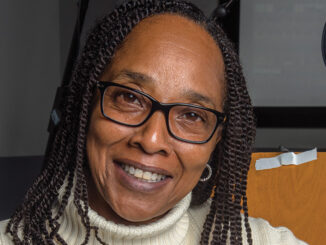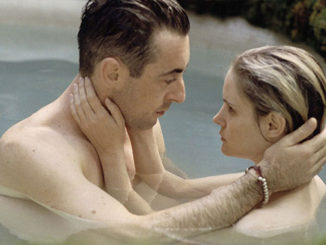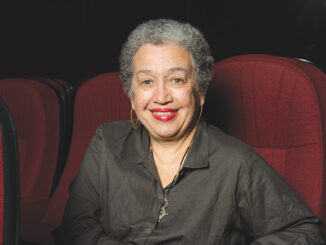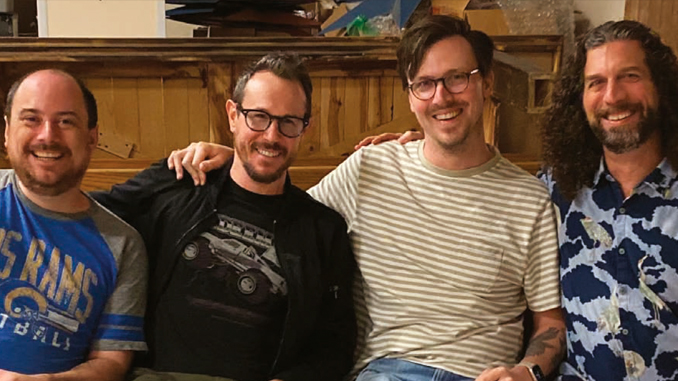
By Peter Tonguette
Its characters may or may not be righteous, but over the course of three ecstatically entertaining seasons, HBO’s “The Righteous Gemstones” is clearly one of the most riotous, raucous, and rowdy shows on television.
The comedy tells of the family life, business operations, and assorted scandals of the Gemstone family, televangelists who seek to reach souls over the airwaves and in-person at their megachurch, the Gemstone Salvation Center. The imposing patriarch is Eli Gemstone (John Goodman), but circling around him are a constellation of memorable characters, including his offspring: associate pastor Jesse (played by series creator Danny McBride), youth pastor Kelvin (Adam DeVine), and church singer Judy (Edi Patterson).
Watching “The Righteous Gemstones,” viewers might often have the feeling that the Gemstones’ sacred and profane travails might lead just about anywhere, but the show is the product of the disciplined and creative work of a group of collaborators committed to a unique comic vision.
Produced by Rough House Pictures — the production company founded by executive producers (and frequent show directors) McBride, Jody Hill, and David Gordon Green — the show is shot (and often edited) on location in South Carolina.
The postproduction team is led by picture editor and co-producer Justin Bourret, ACE, who has worked on the series since the pilot. Joining Bourret on recent seasons are editors David Canseco, Joseph Ettinger, and Todd Zelin. Re-recording mixer and supervising sound editor Nicholas Renbeck, MPSE, has been with the show since the beginning.
CineMontage recently asked the editors to discuss the virtues and vices of the Gemstones and the joy of bringing their travails to life.
CineMontage: Justin, what excited you about working on the pilot?
Justin Bourret: I had met Danny and the whole Rough House gang on season 2 of “Vice Principals.” They liked my style, and several years later, when the pilot for “The Righteous Gemstones” came up, I got a call that Danny wanted me to edit it. The script by Danny was really well done. I got a good sense of each character, and the story was nicely laid out. These scripts, in general, are really tight. I came out a couple weeks early to help with the camera and makeup tests, and I was able to see the table-read. It was like magic. I could tell right away that all of the actors that he picked just gelled together.
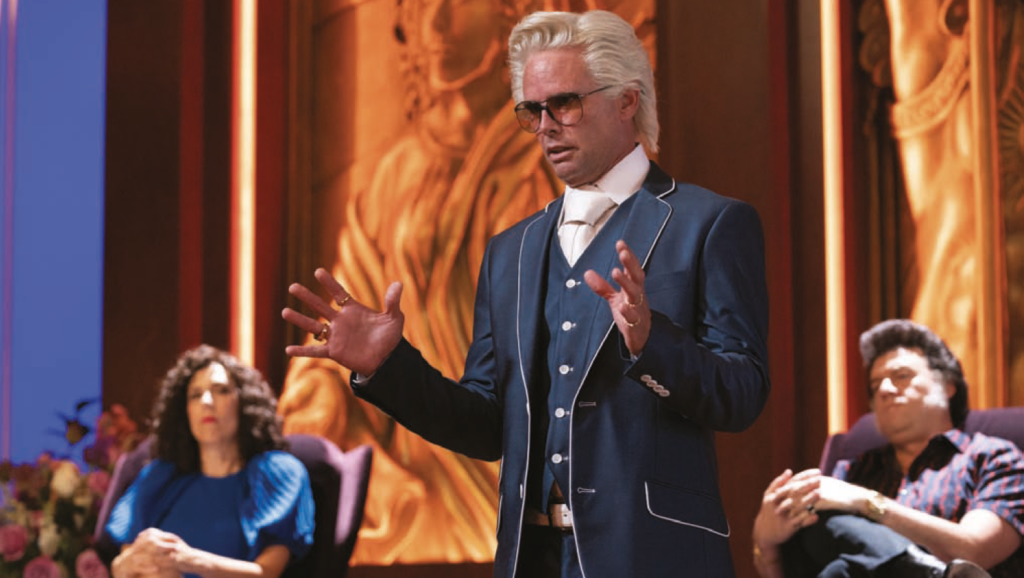
CineMontage: Is it tough to edit pilots?
Bourret: They are a hard nut to crack because, even on some really good shows, the pilot may be good, but you don’t really have a sense of what the show is going to be about until a couple of episodes in. The pilot for “The Righteous Gemstones” gave a great sense of character and story, as well as nailing the tone, which is this sort of tight-rope we have between comedy and drama.
CineMontage: How would you characterize the tone?
Bourret: We are making a comedy, but it’s a comedy where if you stripped away all the jokes, you would still have a very interesting drama or other type of film. Each season sort of takes on a different genre. Season 1 had this Coen Brothers-style, blackmail plot. It also had a little Western flair to it. Then, season 2 had the gangster thing going on, and then season 3 delves more into family dynamics and the militia.
CineMontage: Joe, you came onto the show on season 3 after being a fan during the first two seasons. What did you respond to as a viewer?
Joseph Ettinger: As a viewer and as an artist, I love dark comedies. I find a lot of joy in storytelling that has dramatic irony or dissonance. These characters are almost comedically monstrous, and yet you can’t help but cheer for them in a weird way. That’s such an interesting fine line to walk. It’s such a challenge creatively to create that tone and atmosphere for the show.
CineMontage: David, is it a challenge to get audiences to invest in characters who are so outrageous?
David Canseco: A lot of it comes from Danny and the writing and the directing. But John Goodman is really our foundational rock. He really grounds the show. We need to make sure that we beat out these character moments so we understand what’s going on. You need to believe that these characters are real in some sense, and then that lets us get away with the comedy. Bourret: You are doing a balancing act. You have a full scene that’s very funny even if it’s dark, but then on a dime, you have a scene that rips your heart out. What you always have to keep in your mind as an editor is what you are trying to relay in a scene and how that is going to affect not only the scene that came before but scenes coming later.
CineMontage: In general, what is the workflow like on the show?
Bourret: Like many TV shows, we work in blocks. Most of the episodes were shot together throughout the whole shooting schedule, so we were a little all over the place. Some days one editor would get hit a little hard, and there would be a week where the other editors would get hit a little hard. As they’re shooting, we’re editing and immediately showing scenes to one another, to the director, and to Danny.
Canseco: They shoot a lot of footage. Normally, for a day of shooting on a TV show or a movie, you get two-and-a-half or three hours. This show pushes four or five hours. The scripts are loaded, and there’s a decent amount of improv. Once we have an editor’s cut, it’s rare for something to be under 40 minutes, and usually it’s closer to an hour.
CineMontage: Are there particular scenes where the actors do get a chance to go on riffs?
Todd Zelin: Probably the scenes that have the most improv are the scenes at Jason’s Steakhouse. First of all, those scenes take 12 hours to shoot, so that’s a full day for the actors. It’s one of the few times that our amazing cast is all together in one room. They definitely riff and play off each other. One of the big indicators of whether or not they like the idea they’ve come up with on-set is they’ll do it over and over again in every take to make sure they have a version of it in every angle. Then they’ll come up with new things here and there, one-offs that they’ll say just once on an improv run.
CineMontage: How do you handle that material as an editor?
Zelin: For my editor’s cut, I’m going to deliver the best version of what’s on the page plus what I just think is funny. If they’ve done a certain improv run over and over, I’ll know that at some point they will want to see a version of that improv run cut together and maybe multiple versions of it. Once we’ve screened it, I’ll try different versions of the same improv. Sometimes someone will say, “I just want something punchy here.” I’ll go back in and I’ll look: What else is here? What else did they do?
CineMontage: Joseph, talk about how the post team works together.
Ettinger: So much of the tone of the show is set in the edit bay, and we are super-fortunate to have a group of editors that work in collaboration. Editing can be an isolating job sometimes, and certainly not every show has a sense of community. This is definitely a show where, when I was finding my footing or feeling a little insecure about some of my first cuts, I could take them to the other guys and talk through stuff. We bring in assistant editors. We bring in PAs. A good idea can come from anywhere.
CineMontage: There’s a cutting room set up in Charleston, South Carolina, right?
Canseco: We all kind of pepper in at the beginning. Everybody who works on the show is in LA, but once the schedule comes up, we all just find our way out to Charleston in different ways.
Some people drive out because they have pets. We go to this very small town that doesn’t have a lot of filming, and we kind of take it over. We work out of a shopping mall.
CineMontage: Is that helpful?
Canseco: You definitely feel like you’re part of this weird community that we’ve built.
CineMontage: Justin, what’s it like editing John Goodman’s material?
Bourret: You can tell when you’re editing someone who is a seasoned actor like he is. He knows exactly where his character is going, and he also knows when he’s in a close-up. It’s definitely an art that I have noticed in actors who have been around.
Ettinger: The cast is phenomenal. In particular, I love getting Edi’s dailies. She is a joy to cut because she always gives you so many options and you have varied perfor-mances to operate with. Especially with the unique tone of the show, these actors are so dialed into what this world needs to feel like. You rarely have moments where you’re struggling to find the right beat.
Zelin: The actors give amazing performances. They’re hitting the drama hard when they need to, and they’re hitting the comedy hard when they need to. Part of what makes it work is the show takes wild swings back and forth. You’ll go from heart-wrenching when Eli is in the hospital after getting attacked by the cycle ninjas, and then you cut outside to everyone freaking out and puking. You’re always playing in those extremes.
CineMontage: Nicholas, what are you trying to accomplish on the show from a sound perspective?
Nicholas Renbeck: I hope we are able to give the show, in some subtle sense, its own personal sonic voice. We thought a bit about bugs and birds of South Carolina, how those sounds come out when the Gemstones are in nature, or on their compound, and definitely in the nighttime scenes. Sometimes we can push the sounds of, say, crickets and cicadas to help add to the tension of a scene. There is definitely the idea of wealth vs. poverty with the Gemstones that I like to explore when possible. In the Salvation Center, the family compound, and Jason’s Steakhouse, we look to make things sound a bit more pleasant, and have some fun playing with the megachurch audience’s reaction and interactions with the family on stage. We contrast that with when the family is in a poorer location — say, a roadside motel, where we’ll push the highway traffic sounds, rattier-sounding cars, unpleasant air-conditioning units. Plus, every season there are fun vehicles to give voice to. There are a lot of action sequences for a 30-minute show.
CineMontage: How do you work with the overall post team?
Renbeck: Danny works very closely with the picture department as they put things together. A majority of the time, they are choosing how they see the show moving along sound-effects-wise, and they put in placeholders. Some of the stuff is just right to begin with and we just need to sweeten it a little bit, and other times the sound department will fill it out a lot more. Before each episode, Justin and I will have a conversation on what we need to accomplish. We’ll go through every single episode before the sound crew starts on it. For something like the locust swarm at the end of season 3, we definitely needed to discover what that was going to sound like.
CineMontage: What are we hearing during the locust swarm?
Renbeck: Oh, the Foley and sound effects team went full-on there. We definitely have a lot of sound elements playing at that point, more than I can totally recall. We had actual tracks of locusts flying, pumped up with crickets and grasshoppers along with some evening peepers, and a 17- year cicada recording I had recorded a few years back, which adds an eerie, sort of otherworldly effect to the swam. Rachel Wardell, our sound effects editor, very creatively added in some stampeding animals, a motorboat engine, and processed helicopter blades to give the whole swarm a bit more body and shape to it. Whenever the swarm would “reach out,” like a hand of God trying to grab someone, we added a low-end bass drop effect to give it a final sell. On the Foley side, our team of Marko Costanzo, George Lara, and Ailin Gong did a fantastic job covering the hundreds of locust wings, flybys, and insect impacts. (Ed. note: To read more about Ailin Gong and her work, please refer to the “What Our Members Do” feature on page 20.)
CineMontage: Justin, is “Gemstones” a show that changes a lot in post from a picture-editing perspective?
Bourret: The scripts are very strong. Sometimes we rearrange scenes, but it’s more about cutting out things that we just don’t need. We say, “Do we need to say that line that many times?” Or “This scene says it better than that scene, so let’s eliminate the middle scene.” Danny lets the editors bring their own sense of style. He loves style and creativity. Every once in a while, we get a scene that maybe is not popping the way we wanted it to, and he’ll turn to us to come up with creative ways to execute what he was looking for. Sometimes it may be to make a montage out of something that wasn’t a montage.
Ettinger: It’s a testament to Danny’s ability to bring people into the world, and that includes the actors, the DPs, and everyone who has to buy in. If I were in his shoes, I don’t know if I’d be able to describe what I wanted. He does such a good job of communicating that vision and getting everyone onboard, and that’s a huge part of the success of the show.



